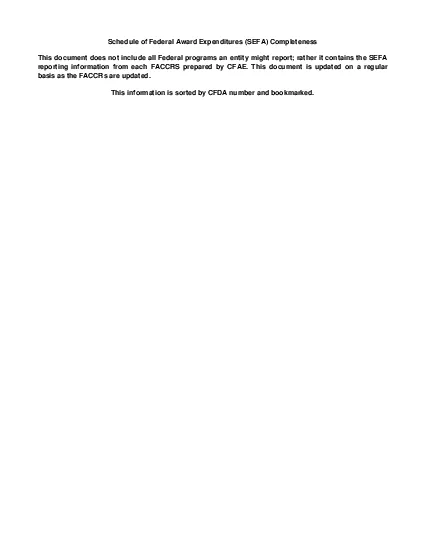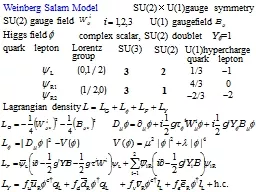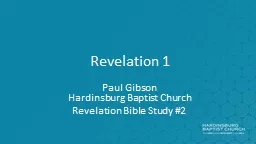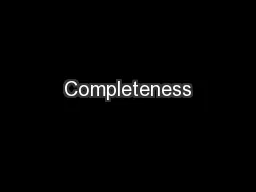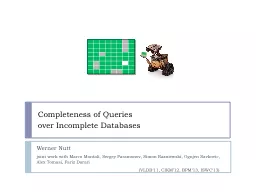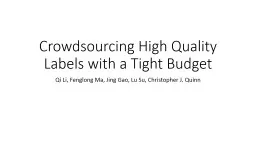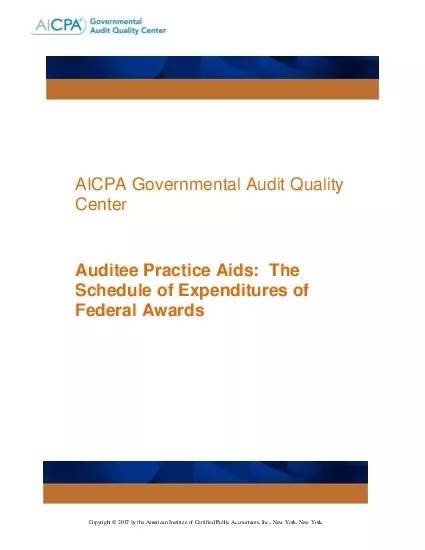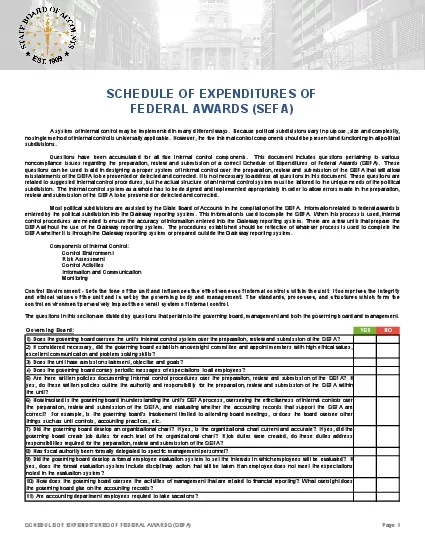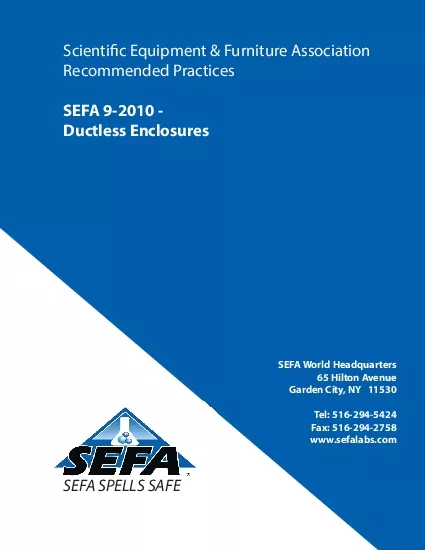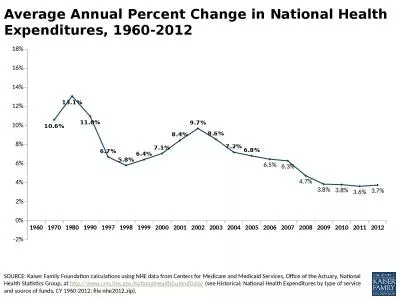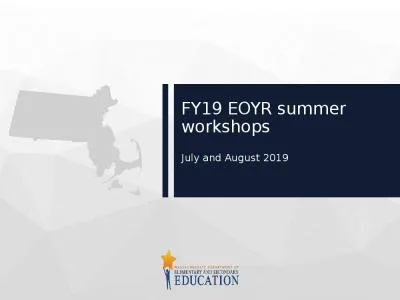PDF-Schedule of Federal Award Expenditures SEFA Completeness This document
Author : madeline | Published Date : 2021-08-07
YEAR ENDED 2017 FEDERAL AWARD NAME Guidance for Grants with no CFAE Prepared FACCR Reporting in the Schedule of Expenditures of Federal Awards The auditee must prepare
Presentation Embed Code
Download Presentation
Download Presentation The PPT/PDF document "Schedule of Federal Award Expenditures S..." is the property of its rightful owner. Permission is granted to download and print the materials on this website for personal, non-commercial use only, and to display it on your personal computer provided you do not modify the materials and that you retain all copyright notices contained in the materials. By downloading content from our website, you accept the terms of this agreement.
Schedule of Federal Award Expenditures SEFA Completeness This document: Transcript
Download Rules Of Document
"Schedule of Federal Award Expenditures SEFA Completeness This document"The content belongs to its owner. You may download and print it for personal use, without modification, and keep all copyright notices. By downloading, you agree to these terms.
Related Documents

